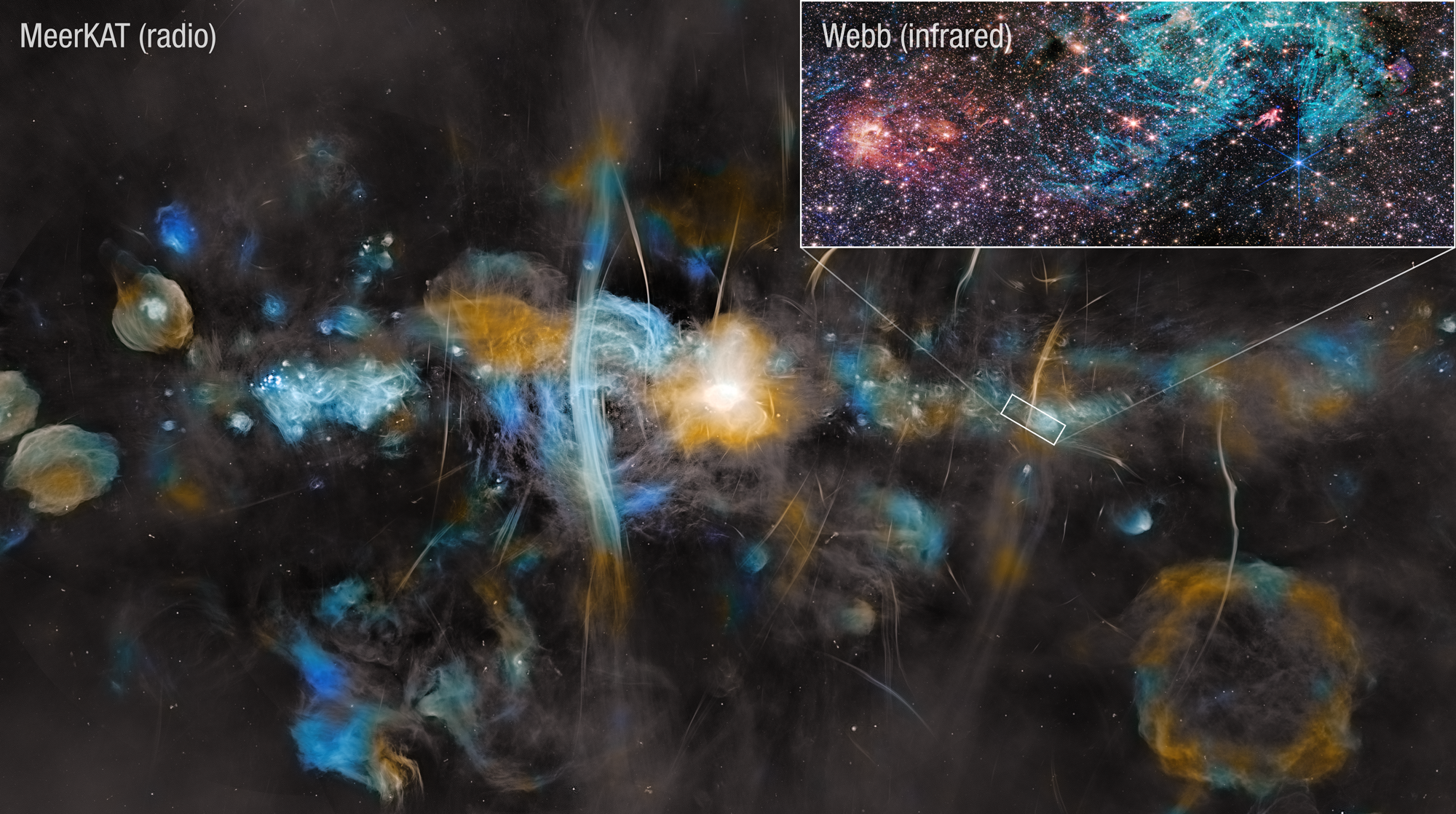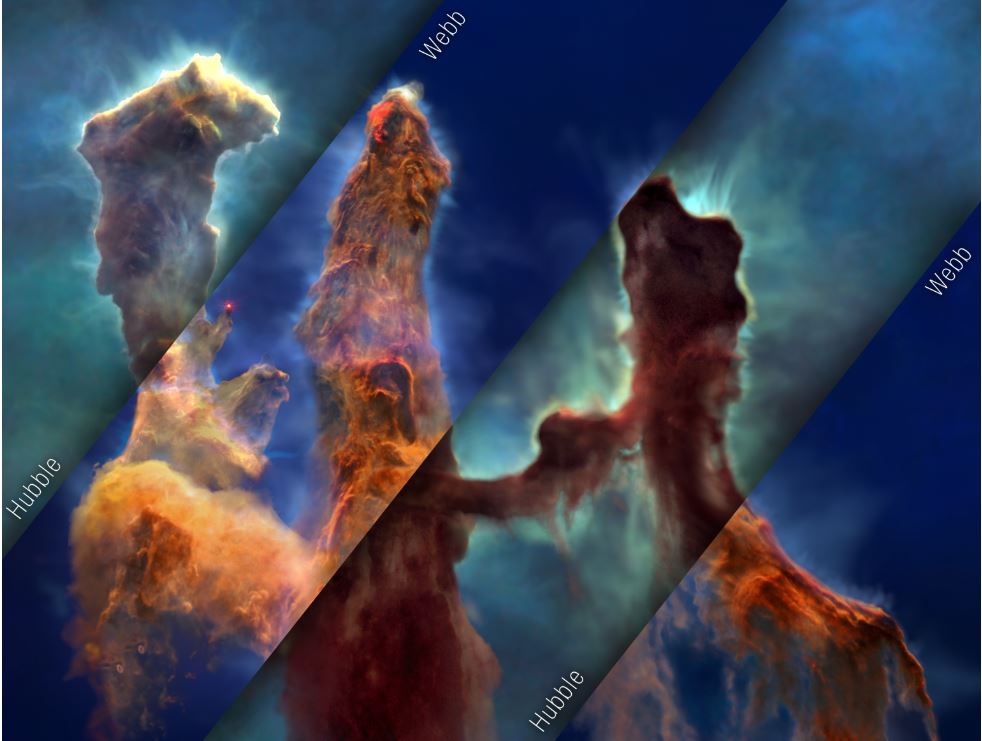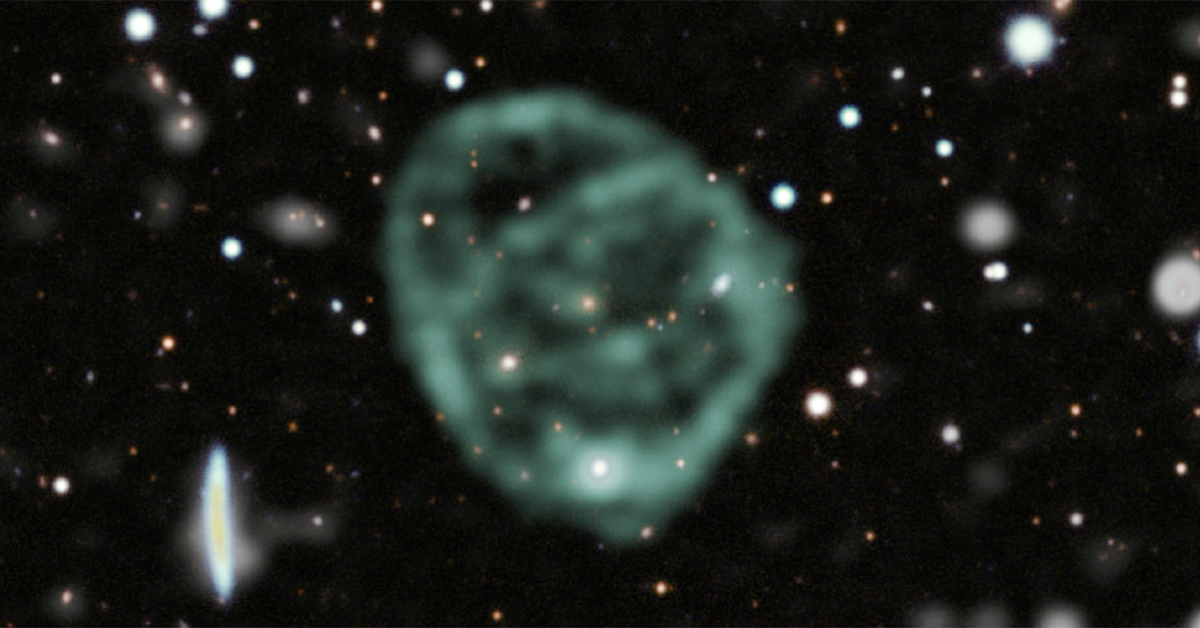
NASA, ESA, CSA, STScI, SARAO, Samuel Crowe (UVA), John Bally (CU), Ruben Fedriani (IAA-CSIC), Ian Heywood (Oxford)
Follow-up research on a 2023 image of the Sagittarius ...
Read More

Follow-up research on a 2023 image of the Sagittarius ...
Read More
Made famous in 1995 by NASA’s Hubble Space Telescope, the Pillars of Creation in the heart of the Eagle Nebula have captured imaginations worldwide with their arresting, ethereal beauty.
Now, NASA has released a new 3D visualization of these towering celestial structures using dat...
Read More
Outflowing galactic winds from exploding stars may explain the enormous rings. Astronomers believe they may have found the origin of the universe’s giant odd radio circles: they are shells formed by outflowing galactic winds, possibly from massive exploding stars known as supernovae.
t’s not every day astronomers say, “What is that?” After all, most observed astronomical phenomena are known: stars, planets, black holes and galaxies...
Read More
Astronomers using the National Science Foundation’s Karl G. Jansky Very Large Array (VLA) have discovered an important new clue about how galaxies put the brakes on vigorous episodes of star formation. Their new study of the neighboring galaxy M33 indicates that fast-moving cosmicray electrons can drive winds that blow away the gas needed to form new stars.
Such winds are responsible for slowing the rate of star formation as galaxies evolve over time. However, shock waves from supernova explosions and energetic, black hole-powered jets of material coming from galactic cores have been considered the primary drivers of those winds...
Read More
Recent Comments